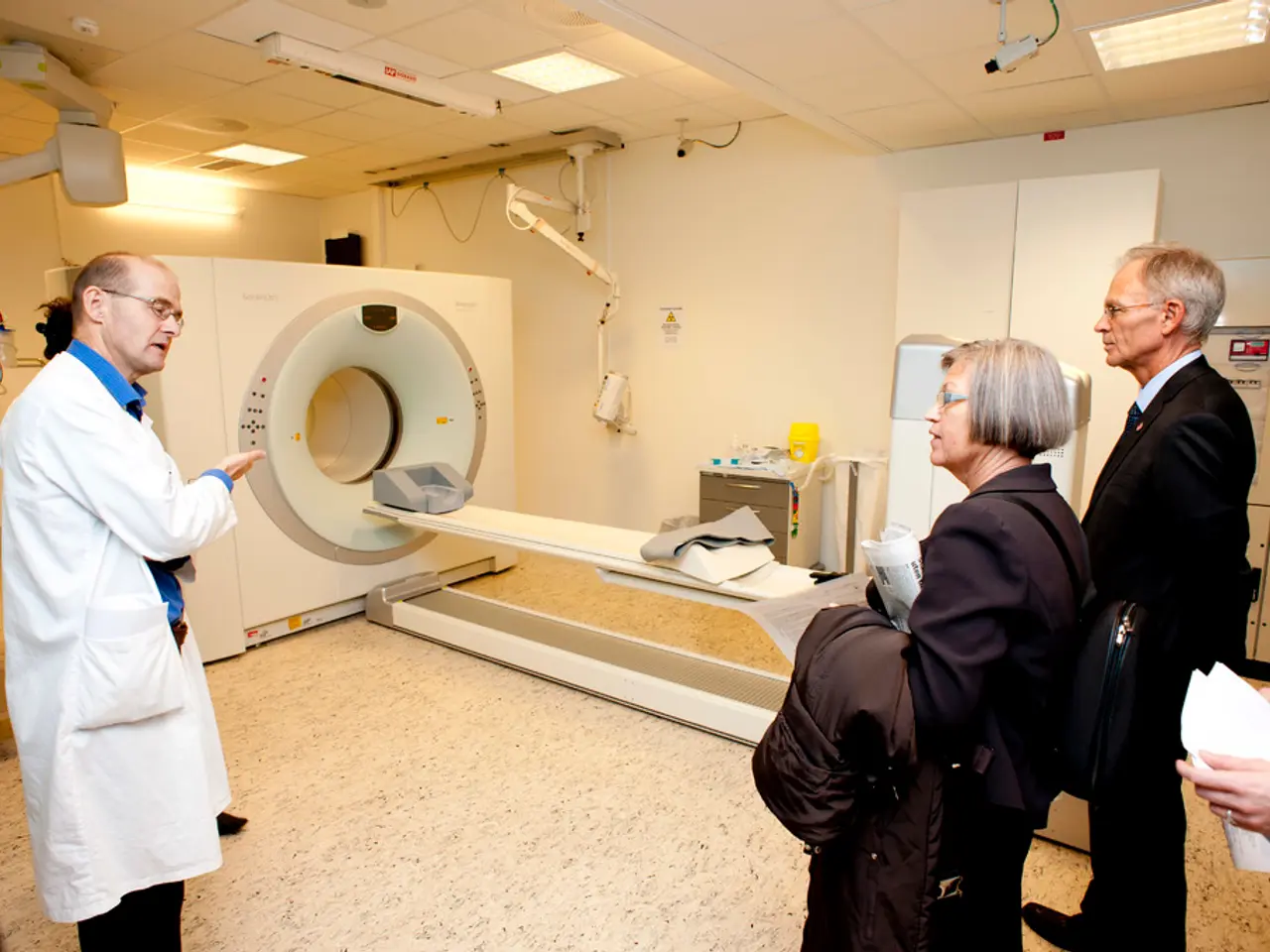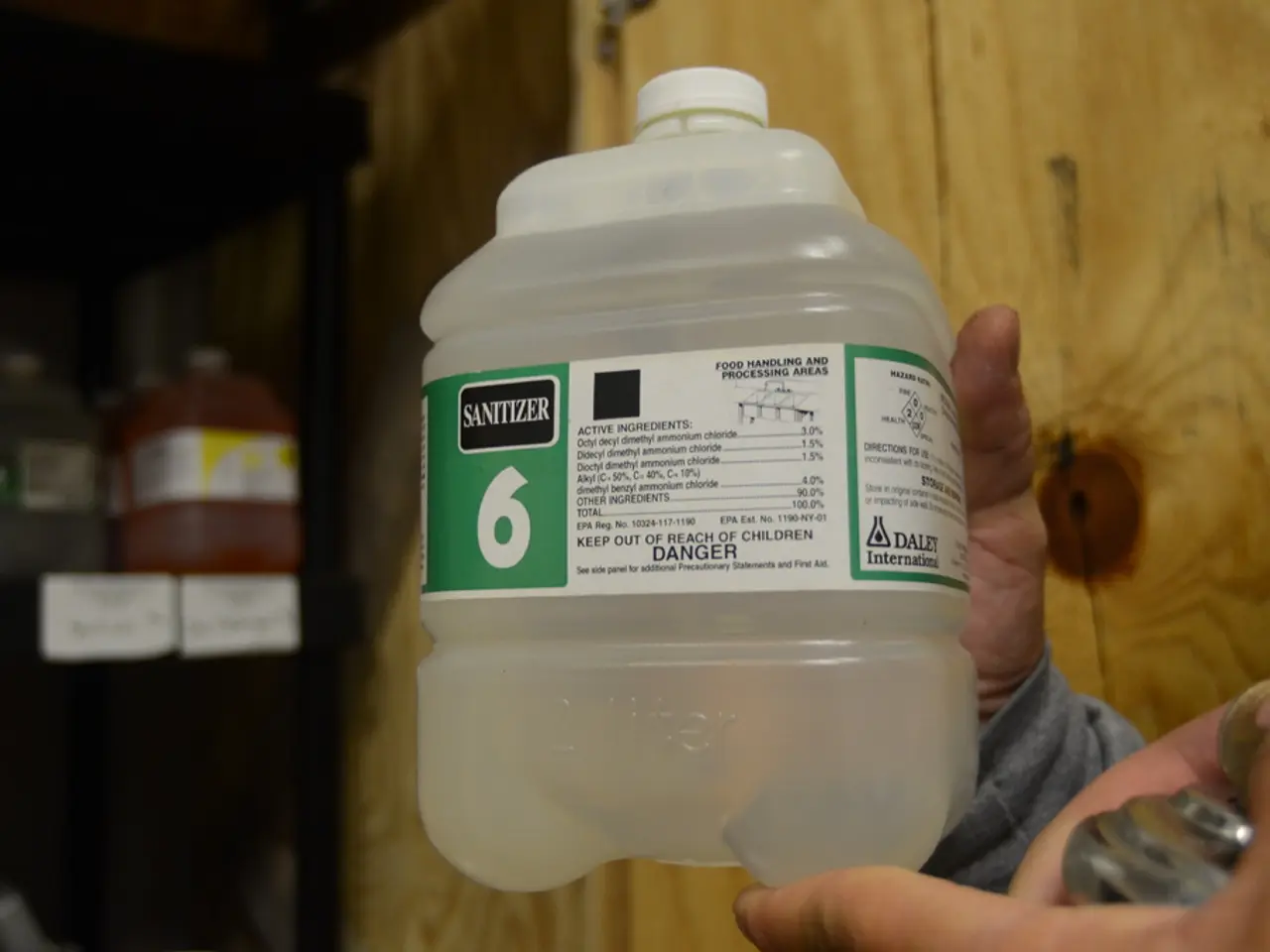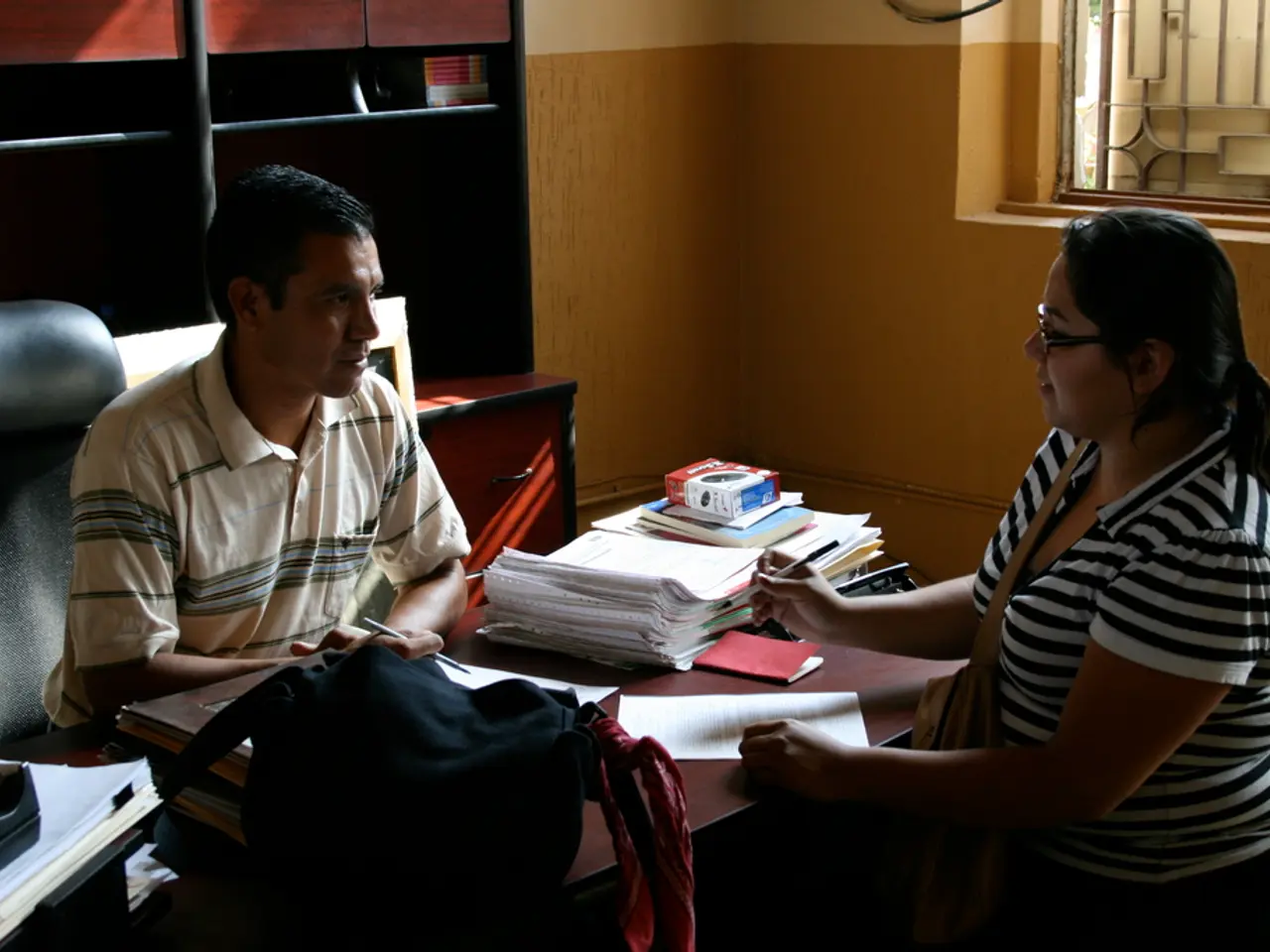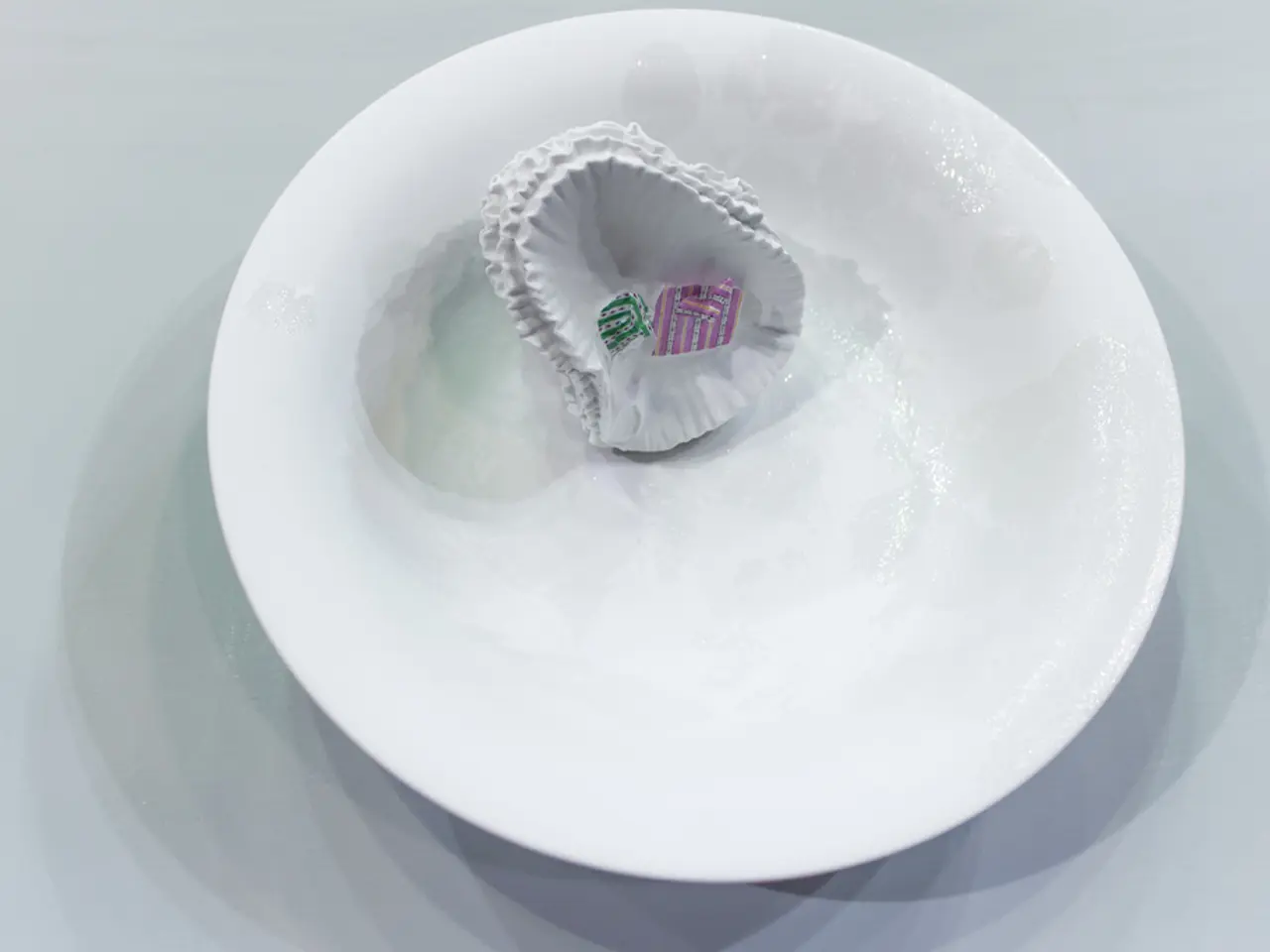CT Scans of the Abdomen: Description, Applications, Images, and Further Information
In the realm of medical imaging, the abdominal CT scan stands as a valuable diagnostic tool, offering a detailed, high-resolution glimpse into the internal workings of the body. This non-invasive procedure can help identify a wide range of conditions, from common ailments to severe emergencies.
Before undergoing an abdominal CT scan, it's essential to fast, take a contrast dye, and remove any metal objects. The contrast dye, while not suitable for everyone, aids in making internal organs and blood vessels more visible on the scan. However, it's crucial to inform healthcare providers about any allergies or medical conditions, especially if one has experienced an allergic reaction to contrast dye, seafood, or iodine.
The CT scanner, a large, donut-shaped machine, uses a thin beam of radiation to scan the body from multiple angles, creating cross-section images of the inside of the body. The process is quick, usually lasting only a few minutes, during which the person must remain perfectly still. Some may find this uncomfortable, but pillows or straps may be used to help keep them in the correct position.
The diagnostic capabilities of the abdominal CT scan are vast. It can aid in the detection of various cancers, including those affecting the liver, kidneys, pancreas, stomach, ovaries, and lymphomas. In addition, it can help diagnose infections and inflammatory conditions such as abscesses, appendicitis, diverticulitis, pancreatitis, and pyelonephritis (kidney infection). Vascular problems, like abdominal aortic aneurysms and blood clots in major abdominal vessels, can also be identified, as can traumatic injuries to organs such as the spleen, liver, kidneys, or bowel.
Other common conditions that an abdominal CT scan can help diagnose include kidney stones, bladder stones, bowel obstructions, and hernias. Moreover, it can provide valuable insights into gastrointestinal diseases like Crohn’s disease and gynecological emergencies and urological conditions based on symptoms like pain or changes in bowel/bladder function.
It's important to note that while the benefits of an abdominal CT scan are significant, there are potential risks to consider. These include increased cancer risk and contrast dye allergies. The cancer risk from a CT scan is small due to the low dose of radiation it delivers. However, severe side effects from the contrast dye, such as hives, itching, swelling of the throat and airways, hoarseness, difficulty swallowing or breathing, confusion, agitation, fast heartbeat, bluish skin discoloration called peripheral cyanosis, should be reported immediately. Mild side effects like stomach cramps, diarrhea, nausea, vomiting, constipation are also possible.
After the scan, people will need to make a follow-up appointment with their doctor to discuss the results and plan the next steps. A radiologist will interpret the results and send a written report to the doctor.
In conclusion, the abdominal CT scan is an invaluable diagnostic tool, offering a comprehensive view of the entire region in a fast and minimally invasive manner. It guides treatment decisions and aids in the early detection of various conditions, making it a crucial part of modern medical diagnostics. As with any medical procedure, it's essential to weigh the benefits against the potential risks and discuss any concerns with a healthcare provider.
- In instances where a patient needs a diagnosis for potential health-and-wellness issues such as abdominal cancers, infections, or vascular problems, a PSA (abdominal CT scan) can provide detailed insights and aid in early detection.
- Before undergoing an abdominal CT scan, it's crucial to be aware of certain requirements, including fasting, taking a contrast dye, and removing any metal objects. However, it's equally important to inform healthcare providers about any allergies or medical conditions, especially those related to contrast dye, seafood, or iodine.
- An abdominal CT scan can also help diagnose common medical-conditions like kidney stones, bladder stones, bowel obstructions, and hernias, offering valuable information for therapies-and-treatments and gastrointestinal or gynecological emergencies.
- Although the abdominal CT scan delivers a low dose of radiation, potential risks associated with the procedure include increased cancer risk and contrast dye allergies. Severe side effects from the contrast dye, such as hives, difficulty breathing, or agitation, should be reported immediately.
- Following the abdominal CT scan, a follow-up appointment with a doctor is necessary to discuss the results, plan the next steps, and receive a radiologist's report on the findings. This consultation will help guide future treatments and management of the patient's health-and-wellness.




